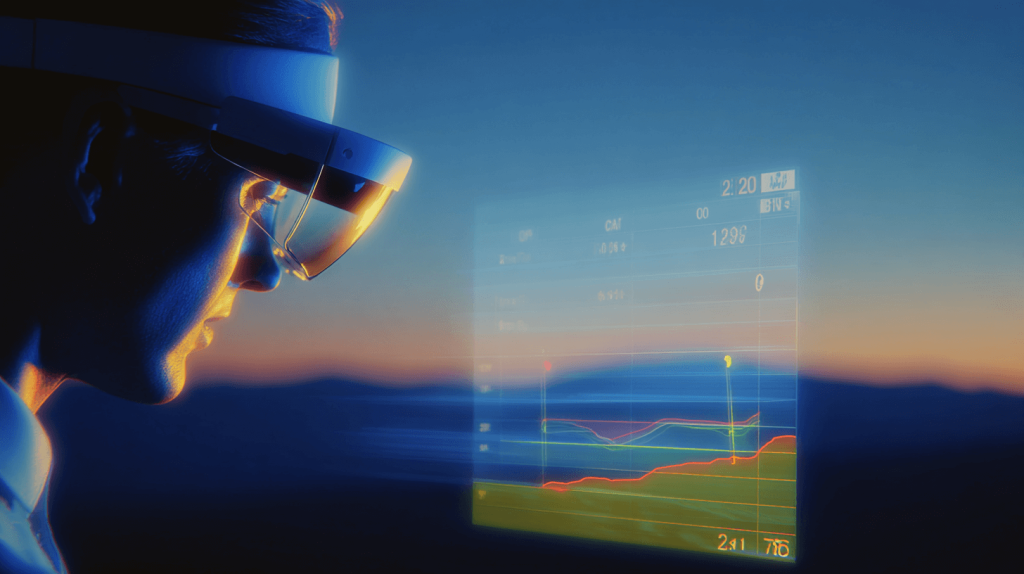By Andrew Rapacke, Managing Partner, Registered Patent Attorney
Track 1 applications averaged a final disposition in just 5–6 months during fiscal year 2023 – dramatically quicker than the roughly 25-month average for regular applications. This isn’t marketing hyperbole; it’s USPTO data showing how prioritized examination has fundamentally changed patent timelines for companies willing to pay premium fees.
Recent data show Track 1 applications achieved an 87.1% allowance rate, nearly 10 percentage points above the ~77.3% for comparable non-prioritized filings. The numbers reveal something counterintuitive: expedited examination doesn’t just deliver speed – it delivers better outcomes.
For biotechnology startups, this timeline compression can significantly impact their survival. Between 2011 and 2022, 27% of all patents on small-molecule drugs and 51% of patents on biologic drugs were granted via Track 1. Pharmaceutical companies have discovered that controlling patent timing enables strategic market positioning worth millions in extended exclusivity.
Whether you’re protecting breakthrough AI algorithms before competitors catch up or securing SaaS innovations to attract Series A funding, understanding Track 1’s mechanics, costs, and strategic applications determines whether you’ll control your market timing or watch opportunities slip away during standard examination delays.
What Track 1 Prioritized Examination Actually Delivers
Track 1 prioritized examination, formally known as the “Track One Prioritized Examination Program,” is the USPTO’s primary mechanism for expediting the review of patent applications. Established under the America Invents Act in 2011 and codified at 37 C.F.R. §1.102(e), this program transforms patent prosecution from a multi-year waiting game into a predictable 12-month process.
The core mechanism works like priority boarding at airports – you pay extra to skip the regular queue. Upon grant of a Track 1 request, the application is accorded special status and immediately placed on an examiner’s high-priority docket, bypassing much of the typical waiting period.
For software and AI innovators, this acceleration is particularly crucial. Technology moves fast, and waiting 2-3 years for patent protection can mean your innovation is already obsolete or widely copied. Track 1 lets you secure enforceable rights while your technology still delivers a competitive advantage.
Timeline Compression: The Real Numbers
The time savings are substantial across every examination phase:
| Examination Milestone | Standard Process | Track 1 Process |
| First Office Action | ~18–20 months from filing (recent average ~22 months) | ~2–3 months from filing |
| Final Disposition | ~ 24-30 months or more (traditional total pendency ~26 months) | ≤ 12 months (Track One grant goal) |
| Patent Grant | ~ 28+ months is plausible depending on appeals, delays, etc. | 12-14 months |
The USPTO commits to reaching a final disposition (allowance, final rejection, or abandonment) within 12 months for at least 95% of Track 1 applications. In practice, most prioritized applications move much faster.
Quality Maintains Despite Speed
The USPTO does not cut corners on the examination itself – the same patentability criteria and quality reviews apply. Internal studies confirm examination quality metrics show no compromise between Track 1 and standard examination.
Track 1 applications are often assigned to highly experienced examiners (on average, Track 1 examiners had ~396 months of experience, compared to 314 months for non-Track 1 examiners in one analysis). These veteran examiners deliver thorough examinations within compressed timeframes by focusing on resource allocation rather than cutting corners.
Track 1 Filing Requirements: What Qualifies and What Doesn’t
Success in Track 1 depends on meeting specific eligibility criteria that distinguish it from standard patent filing procedures.
Strict Claim Limitations
A Track 1 request will be granted only if the application contains no more than four independent claims and a total of 30 claims, and no multiple-dependent claims. These limits must be maintained throughout the prosecution – exceeding them during amendment results in the loss of Track 1 status.
The rationale is efficiency. Smaller claim sets are quicker to examine, enabling the USPTO to meet the fast timeline. Applicants are thus encouraged to focus on their most essential claims in the Track 1 application.
This claim limitation strategy aligns well with modern software patent drafting. Rather than claiming every possible variation, focus on your core innovation – the unique algorithm, the novel data structure, the distinctive user interface element that gives you a competitive advantage. Additional variations can be pursued through continuation applications if needed.
Eligible vs. Excluded Applications
Eligible Applications:
- Original (non-provisional) utility patent applications and plant patent applications filed under 35 U.S.C. 111(a).
- Continuation and divisional applications can also be filed with Track 1 requests, provided they meet all criteria.
- Beginning in 2012, the USPTO also allowed Track 1 requests for pending applications upon filing a Request for Continued Examination (RCE).
Excluded Applications:
- Design patents are not eligible for Track 1, since design applications have their own expedited examination option.
- Reissue applications and reexamination proceedings are also excluded from this provision.
- Continuations-in-part (CIP) containing new matter, or any application that claims benefit of more than one prior non-provisional application, are ineligible.
Filing Requirements That Can’t Be Missed
The request for prioritized examination (USPTO Form PTO/AIA/424) and all Track 1 fees must be submitted at the time of filing (or with an RCE). You cannot request Track 1 after the application has already been examined or if a first Office Action has been issued.
If any required element – such as the executed oath or invention declaration, or application filing fees – is missing at filing, the Track 1 petition will be dismissed. The USPTO typically provides one opportunity to correct errors; however, delays can jeopardize the expedited timeline.
Track 1 applications must be filed electronically via the USPTO’s EFS-Web or Patent Center systems. Paper filings are not eligible for prioritized examination.
Track 1 Fees: Investment vs. Return Analysis
As of 2024, the Track 1 fee is $4,200 for large entities (with 50% and 75% discounts for small and micro entities, respectively), plus standard filing fees. This represents a substantial upfront investment that demands strategic justification.
Current Fee Structure
| Entity Type | Track 1 Fee | Total Additional Cost* |
| Large Entity | $4,200 | ~$4,340 |
| Small Entity | $2,100 | ~$2,170 |
| Micro Entity | $1,050 | ~$1,085 |
*Including processing fees
ROI Considerations: When Track 1 Pays
The investment often generates returns through:
Opportunity Cost Avoidance: For a startup, an issued patent could be the key to unlocking a funding round or licensing deal now, rather than later. If a patent would enable a significant revenue opportunity or competitive advantage in that year, the Track 1 fee may be trivial by comparison.
Reduced Prosecution Costs: One study noted that in certain tech areas (like computer networks), using Track 1 correlated with saving over $1,200 in average downstream prosecution costs per case (likely due to fewer office actions). Faster resolution often means fewer Office Action cycles.
Strategic Patent Strength: Additionally, there is a potential quality/strength benefit. Track 1 often results in “cleaner” patents with fewer arguments estopping claim scope. A patent with a short, compact prosecution history may be stronger in litigation.
At Rapacke Law Group, we offer Track 1 filing with transparent, fixed-fee pricing – no surprises from hourly billing. You’ll know exactly what your investment is upfront, allowing you to make informed strategic decisions about whether Track 1 makes sense for your specific situation.
Track 1 Application Process: Step-by-Step Execution
Filing Track 1 requires precision – procedural errors can derail expedited status and cost valuable time.
Filing Timeline and Expectations
After filing, the Office of Petitions will review the Track 1 request. In most cases, within 2–3 weeks of filing, the USPTO issues a decision, either granting prioritized examination or dismissing the request.
Once granted, the acceleration begins immediately:
- Examiner Assignment: Typically within 1 month of Track 1 grant (vs. 6–12 months in a standard case).
- First Office Action: Often 2–3 months from filing on Track 1, compared to ~18–20 months for a first action on a regular application.
- Final Disposition: Usually 5–10 months from filing for Track 1 (12-month max), whereas standard applications commonly take 2–3 years to reach allowance or final rejection.
What Happens After Track 1 Status is Granted
Once the USPTO grants prioritized status, several immediate changes occur in the prosecution process:
Priority Docketing: The application moves to the examiner’s special “Track 1” docket, ahead of all regular new cases. Examiners are given goals to act on Track 1 cases quickly at each stage.
Accelerated Communications: Office Actions on Track 1 applications are issued more quickly, often back-to-back, within weeks of receiving responses. Examiner interviews, if requested, are scheduled promptly (sometimes within days).
Enhanced Prosecution Engagement: Data suggest that Track 1 applicants indeed use interviews more frequently. A recent analysis found that Track 1 applications averaged approximately 0.7 examiner interviews per application, which is higher than the average for regular prosecution.
Success Rates: Track 1 Performance Data
The performance statistics reveal that Track 1 delivers both speed and improved outcomes.
Allowance Rate Advantage
The general USPTO allowance rate for utility patent applications (the percentage eventually receiving a patent) is around 75–76% in recent years. For applications in the Track 1 program, the allowance rate is significantly higher.
Lower Abandonment Rates
Industry experts note that Track 1 applications exhibit roughly half the abandonment rate of regular applications. If about 20–25% of standard filings go abandoned, the Track 1 abandonment proportion is on the order of 10–13%.
Program Volume and Capacity
The annual program capacity is 20,000 applications per year (raised from 15,000 in 2025 due to demand). In FY2024, over 15,000 Track 1 requests were filed, surpassing the previous annual cap and demonstrating strong demand.
Despite this growth, Track 1 filings still represent a single-digit percentage of overall U.S. patent applications, so the program remains a specialized route for selected cases.
Technology Sector Distribution
Track 1 usage reflects strategic priorities across industries:
- Software & IT: 28% of Track 1 requests.
- Medical/Biotech: 22% of applications.
- Mechanical Engineering: 18% of filings.
- Chemical/Materials: 15% of applications.
- Telecommunications: 12% of requests.
Software and consumer electronics operate on rapid product cycles – obtaining a patent quickly can be crucial before a technology becomes obsolete or widely adopted without protection. For more guidance on protecting software innovations, see our AI Patent Mastery and SaaS Patent Guide 2.0 resources.
Strategic Use Cases: When Track 1 Delivers Maximum Value
Pharmaceutical Strategic Timing
A recent study in JAMA Health Forum (July 2024) examined how pharmaceutical companies strategically leverage Track 1 to time their patent grants. In the pharma industry, new drugs get a period of FDA-granted exclusivity.
The timing data is striking: Track 1 patents (for biologics) tend to peak later (around 12–13 years after approval, coinciding with the end of the biologic’s exclusivity), whereas regular patents peak earlier. This suggests that drug companies intentionally utilize Track 1 to expedite patent applications during the brief window when regulatory exclusivity is set to expire.
Startup Funding and Investment
For startups, particularly in the tech and biotech sectors, patents are often crucial for securing venture capital. Investors view issued patents as a sign of a strong moat around the business.
A startup aiming for a Series A round in a year may file a Track 1 application for its core technology; by the time they pitch to VCs, they can show an issued patent rather than just a pending application. This tangible proof of IP ownership can increase valuation and investor confidence.
I’ve seen this strategy work repeatedly for our SaaS and AI clients. When you’re sitting across from potential investors with an issued patent protecting your core algorithm or platform architecture, the conversation changes. You’re not just selling potential – you’re demonstrating protected, defensible innovation.
Fast-Moving Technology Sectors
In industries like software, consumer electronics, or e-commerce, product cycles are extremely short. A patent that grants in 3 years might protect a technology that’s already obsolete or widely adopted by others.
Some companies also use Track 1 to obtain patents ahead of industry-standardization or interoperability milestones, allowing them to influence standards or require others to license their technology.
For AI and machine learning innovations, Track 1 is particularly strategic. The field evolves so rapidly that an algorithm breakthrough today might be standard practice in 18 months. Track 1 lets you secure protection while your innovation still delivers competitive differentiation.
Critical Product Launch Protection
If you know you will be launching a product and you worry about copycats, a Track 1 patent can arm you with enforceable rights near the product launch date. With Track 1, your patent might issue around the time of launch, so you can immediately warn competitors or file infringement suits if needed.
Track 1 vs. Alternative Expedited Options
Patent Prosecution Highway (PPH) Comparison
The PPH allows an allowed claim set in one jurisdiction (e.g., the U.S.) to fast-track corresponding applications in other countries. An applicant in a hurry globally might use Track 1 in the USPTO, obtain an allowance, and then leverage PPH to expedite the process in Europe, Japan, and other regions.
When to Choose Track 1 Over PPH:
- Limited international portfolio without foreign allowances.
- The need for a predictable U.S. timeline, regardless of foreign prosecution.
- Specific U.S. business deadlines that can’t wait for international coordination.
Other Expedited Programs
The USPTO has sunset several free expedited programs (like a first-time micro entity pilot, COVID-related pilot, etc.), making Track 1 the primary avenue for speed now.
Some specialized options remain:
- Green technology acceleration (no fee for qualifying environmental innovations).
- Age/health-based petitions (inventors over 65 or facing terminal illness).
- Infringement-based special petitions.
Track 1 Examination Procedures and Best Practices
Examiner Assignment and Quality
Track 1 cases are assigned to examiners just like typical cases, based on technology area (art unit) and subject matter. However, examiners receive special training and guidance on prioritized examination.
Rather than rushing through the review, examiners are encouraged to allocate focused time blocks to each Track 1 case to perform a thorough search and examination in a shorter calendar window.
Interview Strategy
One notable aspect of Track 1 is the ability (and need) to communicate efficiently with the examiner. The program encourages early interviews and interaction to resolve issues faster.
Many Track 1 applicants request an examiner interview before the first Office Action (a so-called pre-first-action interview). This can be done by contacting the examiner once the application appears on their docket.
Response Strategy
Responding to an Office Action in a Track 1 case is procedurally the same as in any application; however, given the time pressure, applicants often prioritize a compact prosecution. It’s common to see Track 1 responses filed well before the 3-month deadline, sometimes within a few weeks.
Examiners in Track 1 are often more willing to initiate examiner’s amendments or call the attorney to suggest allowable subject matter, since they know the clock is ticking.
Strategic Decision Framework: Should You File Track 1?
High-Value Scenarios
Market Timing Is Critical: When Speed to Patent Directly Impacts Competitive Positioning or Market Entry Timing.
Investment/Partnership Dependent: When issued patents (as opposed to pending applications) significantly impact funding, valuation, or partnership opportunities.
Enforcement Timeline Sensitive: When earlier patent issuance enables a faster response to infringement or facilitates licensing negotiations.
Standards/Specification Deadlines: When patents need to issue before industry standards are finalized or specifications are adopted.
Cost-Benefit Analysis Framework
Consider these factors:
- Opportunity Cost of Delay: What business opportunities depend on having issued patent protection within 12 months vs. 24-30 months?
- Portfolio Strategy: Is this a crown jewel patent justifying premium fees, or would resources be better allocated across multiple standard applications?
- Technology Lifecycle: Will the protected technology remain commercially relevant throughout the extended standard examination timeline?
- Competitive Landscape: How quickly are competitors moving in the same technical space?
When to Avoid Track 1
Some applicants intentionally delay specific applications to keep options open or to extend the overall patenting timeline (patent pending status can sometimes be advantageous if you’re not ready to enforce). Track 1 removes that flexibility – it forces a conclusion, one way or another, within a year.
Avoid Track 1 when:
- Technology is still evolving, and claiming scope flexibility is a valuable asset.
- Budget constraints make the fees prohibitive in relation to the business value.
- No specific timeline pressures exist for the issuance of a patent.
- An international filing strategy depends on a delayed U.S. prosecution.
Your Next Steps to Track 1 Success
Track 1 prioritized examination represents a powerful strategic tool for tech startups and innovators who need patent protection aligned with business timelines. Whether you’re seeking funding, launching a product, or entering a competitive market, controlling when your patent issues can mean the difference between market leadership and playing catch-up.
The bottom line: weak or delayed patents help your competitors. When you secure strong patent protection at the right time, you deter competition, command higher valuations, and control your market position. Track 1 isn’t just about speed – it’s about strategic timing that maximizes your competitive advantage.
Here’s what’s at stake: every month you delay could mean lost investor confidence, missed partnership opportunities, or competitors copying your innovation with impunity. In fast-moving tech sectors, the first-to-file system rewards those who act decisively. Hesitation doesn’t just cost money – it costs market control, revenue opportunities, and competitive positioning that may never be recovered.
Your immediate action items:
- Schedule a Free IP Strategy Call with our patent team to evaluate whether Track 1 makes sense for your specific innovation and business timeline.
- Review your current product roadmap and funding timeline to identify patents where 12-month protection could deliver strategic value.
- Download our SaaS Patent Guide 2.0 to understand how Track 1 fits into comprehensive IP protection strategies.
- If you’re in AI/ML, explore our AI Patent Mastery resource for sector-specific Track 1 considerations.
The most successful startups don’t just innovate – they strategically protect their innovations. Proper Track 1 filing isn’t an expense; it’s an investment in competitive advantage that pays dividends through stronger market position, higher valuations, and protection that actually deters competitors when you need it most.
Don’t let standard examination timelines dictate your business strategy. Take control of your patent timing and transform USPTO processing from obstacle to accelerator.
The RLG Guarantee for Your Patent
When you work with Rapacke Law Group for your patent filing:
- FREE strategy call with the RLG team to determine if Track 1 is right for your innovation.
- Experienced US patent attorneys lead your application from start to finish.
- One transparent flat-fee covering your entire patent application process (including office actions).
- Full refund if USPTO denies your patent application*.
- Full refund or additional searches if your application has patentability issues (your choice)*.
*Terms and conditions apply. Contact us for details.
Andrew Rapacke is Managing Partner and a Registered Patent Attorney at Rapacke Law Group, specializing in software patents, AI innovations, and strategic IP protection for tech startups. Connect with Andrew on LinkedIn or follow @rapackelaw on Twitter/X and Instagram.
To Your Success,
Andrew Rapacke, Esq.
Managing Partner, Registered Patent Attorney
Rapacke Law Group
For the most current Track 1 fee schedules, forms, and filing procedures, consult the USPTO’s official Track 1 information page or contact Rapacke Law Group for personalized guidance on Track 1 strategic filing.




